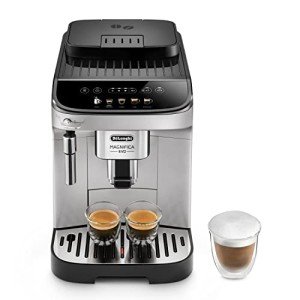Bean To Cup Espresso Coffee Machine : The Ultimate Guide
In the last few years, the coffee culture has actually experienced a significant change, with the increase of home brewing gadgets offering convenience and quality equivalent to coffee shop offerings. Among these gadgets, the Bean to Cup Espresso Coffee Machine sticks out as a favorite among coffee lovers and casual drinkers alike. This detailed guide explores what these machines are, how they function, the advantages they use, and aspects to consider when choosing the right one.
What is a Bean to Cup Espresso Coffee Machine?
A Bean to Cup Espresso Coffee Machine is a sophisticated coffee brewing gadget that grinds coffee beans fresh for each cup, automating the whole espresso-making process. These machines typically include integrated grinders, incorporated milk frothers, and precise developing innovation, enabling users to develop high-quality espressos, lattes, coffees, and more, all from the convenience of their homes. The benefit, coupled with the rich and robust tastes produced, has made these machines progressively popular.
How Does It Work?
The fundamental operation of a Bean to Cup Espresso Coffee Machine can be broken down into several crucial actions:
Bean Grinding
- The machine grinds whole coffee beans immediately before brewing, making sure maximum freshness and flavor retention.
Brewing
- Ground coffee is loaded into a filter, and warm water is forced through the coffee grounds at high pressure, which is vital for producing espresso.
Frothing (Optional)
- Many models include a steam wand or milk frother for preparing frothed milk for lattes and cappuccinos.
Serving
- The final stage includes dispensing the brewed coffee into a cup, frequently with programmable functions for modification.
Benefits of Bean to Cup Espresso Machines
Purchasing a Bean to Cup Espresso Coffee Machine provides numerous advantages, contributing to its growing appeal.
| Advantage | Description |
|---|---|
| Convenience | One-touch operation minimizes the time and effort required to prepare coffee. |
| Quality | Freshly ground beans lead to a richer, more delicious drink compared to pre-ground alternatives. |
| Customization | Users can change settings to fit individual preferences, consisting of grind size, coffee strength, and milk froth levels. |
| Cost-efficient | Although the initial investment might be high, cost savings on coffee buy from cafés can be substantial gradually. |
| Flexibility | The capability to brew numerous coffee types, from espresso to cappuccino, broadens the machine's appeal. |
Key Features to Look For
When choosing a Bean to Cup Espresso Coffee Machine, various features can influence the purchase decision. Below are important factors to think about:
Grinder Type
- Burr grinders are preferred over blade mills for their consistent grind size.
Brewing Pressure
- Try to find machines that use at least 15 bars of pressure for optimal espresso extraction.
Milk Frother
- Choose in between manual steam wands or automatic milk frothers based upon choices for milk texture and foam.
User Interface
- An easy to use control board with programmable settings enhances the total experience.
Size and Design
- Think about the countertop space readily available and select a style that matches your kitchen aesthetic appeals.
Upkeep Options
- Some machines offer automatic cleansing cycles, which can save time and effort in upkeep.
Popular Bean to Cup Espresso Machines
Selecting a machine that fits one's requirements can be challenging. Below is a list of popular designs, understood for their reliability and efficiency.
| Model | Key Features | Price Range |
|---|---|---|
| De'Longhi Magnifica ESAM3300 | Adjustable coffee strength, compact style | ₤ 550 - ₤ 700 |
| Breville Barista Touch | Touchscreen controls, incorporated conical burr mill | ₤ 800 - ₤ 1,150 |
| Saeco PicoBaristo | Automatic milk frother, 12 coffee specializeds | ₤ 900 - ₤ 1,300 |
| Jura E8 | Pulse Extraction Process, Alexa Compatible | ₤ 1,800 - ₤ 2,500 |
| Gaggia Anima | Easy to clean, programmable settings | ₤ 500 - ₤ 800 |
Maintenance Tips
Keeping a Bean to Cup Espresso Coffee Machine in good condition is vital for ensuring longevity and ideal efficiency. Here are some upkeep ideas:
- Regular Cleaning: Clean the machine's parts frequently, including the drip tray, coffee grounds container, and water reservoir.
- Descaling: Perform descaling every couple of months based upon water solidity and use to avoid mineral accumulation.
- Change Water Filter: If the machine has a water filtration system, alter the filter as recommended.
- Inspect Seals and Gaskets: Check for wear and tear to prevent leakages and ensure proper pressure during brewing.
FAQs
1. Are Bean to Cup Espresso Machines easy to use?Yes, a lot of designs are created for user benefit with easy control board and one-touch operation. 2. Can I utilize pre-ground coffee in these machines?While some machines enable for the use of pre-ground coffee, the main benefit depends on using whole beans for fresh grinding. 3. How frequently must I clean my Bean to Cup machine? Bean To Cup Espresso Machine is essential; daily cleaning of detachable parts and descaling every 2-3 months are normally advised. 4. What is the typical
lifespan of a Bean to Cup Espresso Coffee Machine?With proper maintenance, these machines can last anywhere from 5 to 15 years based on use quality
. 5. Are these machines worth the investment?Though they can be pricey, the convenience, quality coffee production, and long-lasting savings make them a worthy investment for numerous coffee enthusiasts. Investing in a Bean to Cup
Espresso Coffee Machine can significantly enhance the home
coffee experience. By supplying freshly brewed, top quality coffee, these machines deal with the growing demand for café-style drinks in the comfort of one's kitchen. With various options on the market, understanding features and personal preferences will aid in selecting the best machine to suit any coffee lover's requirements.

